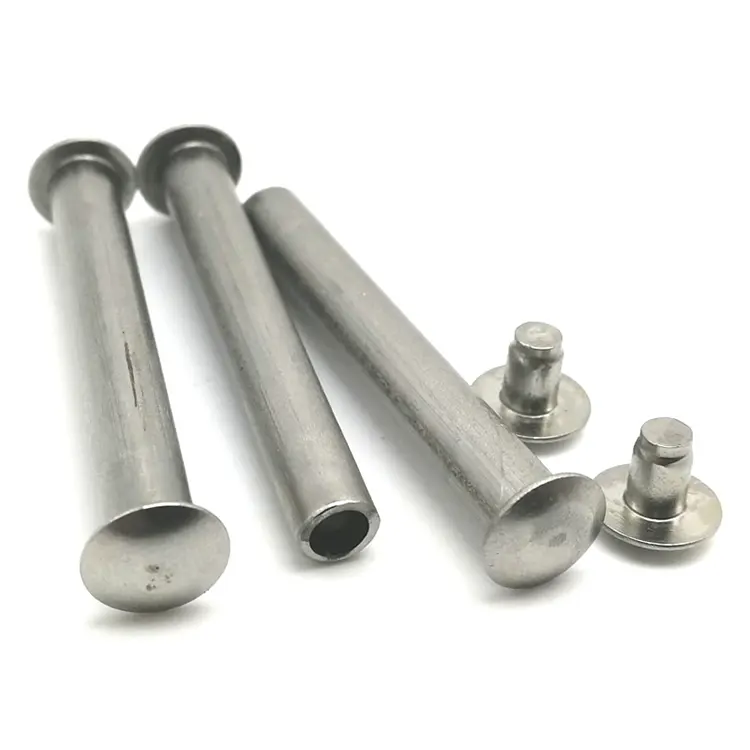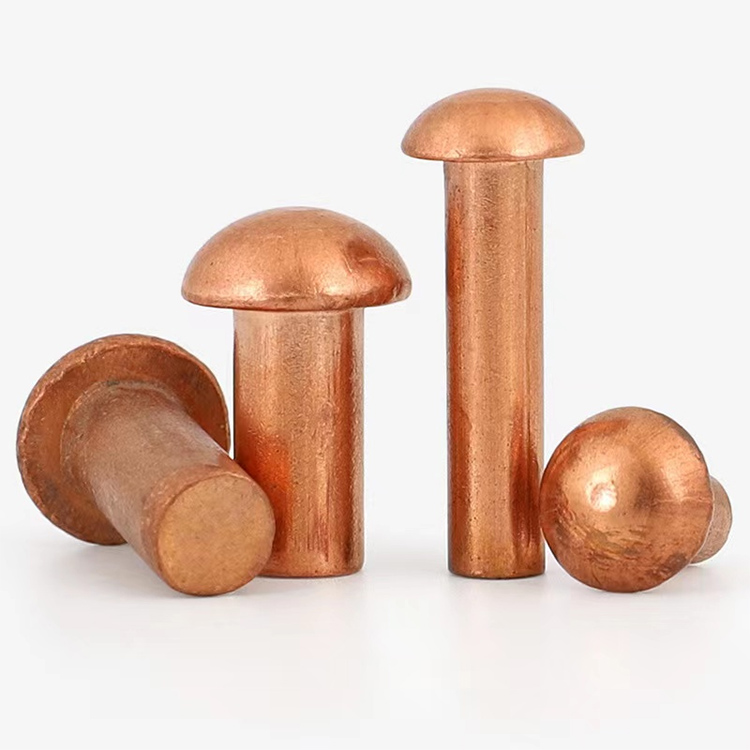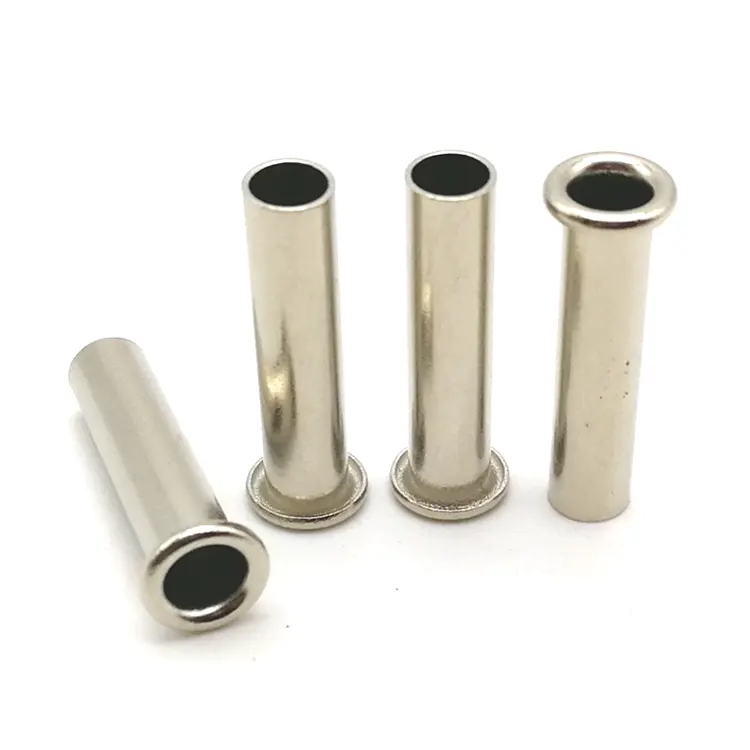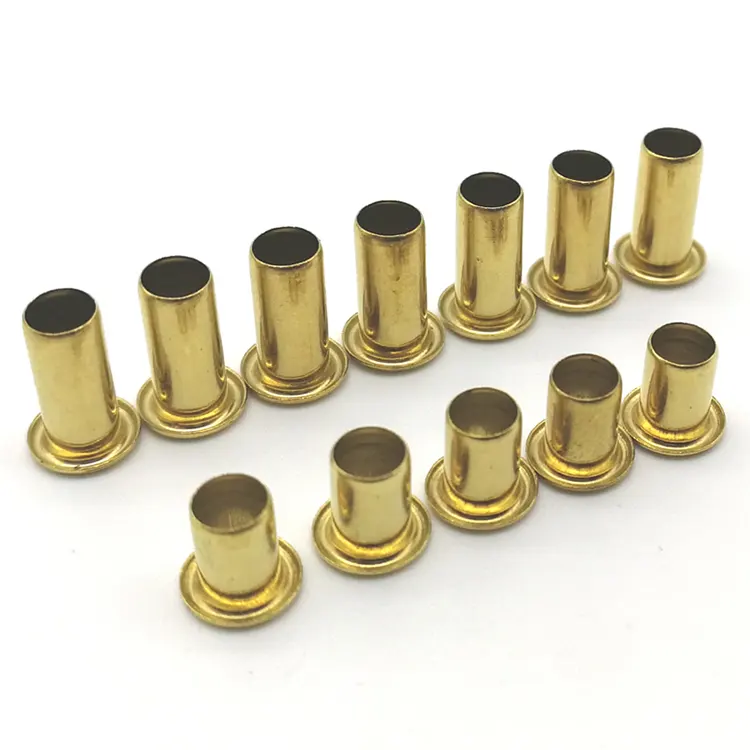Rebites tubulares completos
As one of professional high quality Full Tubular Rivets manufacturer, you can rest assured to buy Full Tubular Rivets from Notin and we will offer you the best after-sale service and timely delivery.
Full tubular rivets are also called as hollow rivets or tubular rivets, they are a common mechanical fastener, primarily used in applications requiring lightweighting or ventilation. Their structural characteristics are a completely hollow center with heads at each end, achieving connection through plastic deformation. Widely used in electronics, automotive manufacturing, aerospace, and other fields, they are favored for their unique structural design.
What is a hollow rivet?
A full tubular rivet consists of a shank and a head. The shank has a through hole in the center, and the head is typically round or oval. During installation, the rivet is inserted through the materials to be joined, and the tail is expanded using a specialized tool to form another head, securing the materials together. Because of the hollow center, full tubular rivets maintain ventilation or fluid conduction after connection, which is their primary difference from solid rivets.
What materials can full tubular rivets be made of? What are the characteristics of different materials?
full tubular rivets are made from a variety of materials, with aluminum alloy, stainless steel, and copper being common.
Aluminum tubular rivets are lightweight and corrosion-resistant, making them suitable for electronic products and lightweight structures. They are the most cost-effective rivets.
Stainless steel tubular rivets are strong and heat-resistant, and are often used in automobiles and industrial equipment. They are more expensive than aluminum hollow rivets.
Brass tubular rivets or copper tubular rivets have good conductivity and are mostly used for electrical connections. Their disadvantage is that they are relatively expensive.
When selecting materials, factors such as the use environment, stress conditions, and cost should be considered.
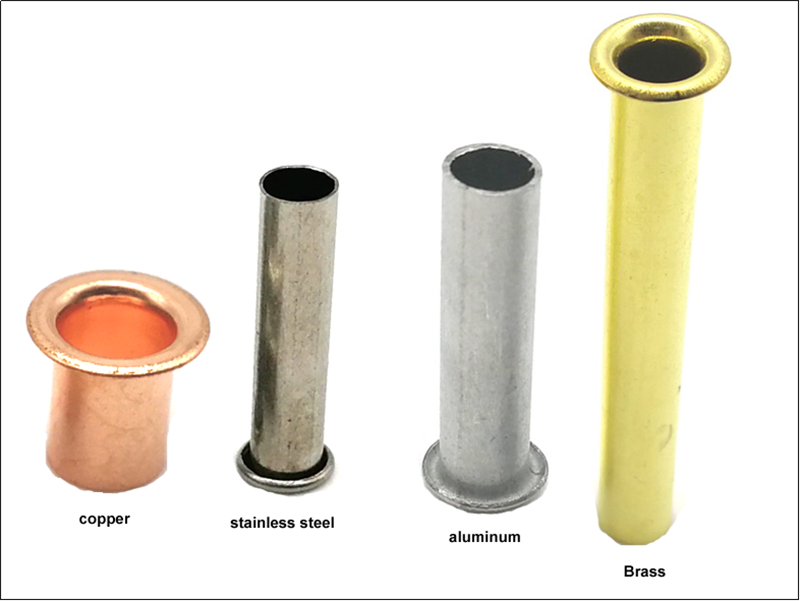
Installation method of full tubular rivets
Special tools are required to install hollow rivets, such as manual riveting machines or fully automatic assembly machines.
The operation steps are as follows:
(1) Drill a hole in the material to be connected, with the hole diameter slightly larger than the rivet diameter.
(2) Insert the rivet into the hole, ensuring that the head is close to the surface of the material.
(3) Align the rivet hole with the matching punch (the punch is installed on the riveting machine). (4) Shake the riveting machine so that the tail of the rivet is impacted by external force and curls up, forming the same arc as the head, thereby achieving the fastening function.
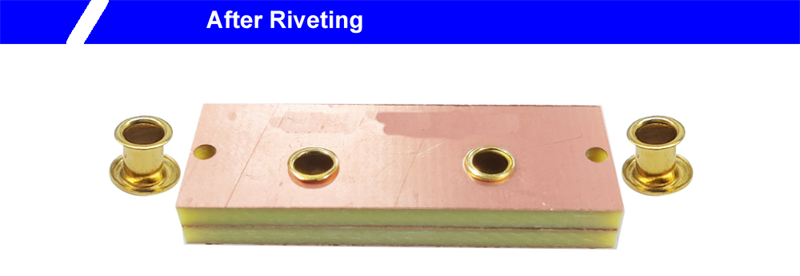
Advantages of Full Tubular Rivets
(1) Light weight: The hollow structure reduces the amount of material used and is suitable for weight-sensitive applications.
(2) Good air permeability: The through hole in the middle can be used for ventilation or diversion to avoid sealing problems.
(3) Easy installation: Only one-side operation is required, which is suitable for narrow spaces or occasions where the back cannot be accessed.
(4) Low cost: Compared with welding or bolting, the riveting process is simple, saving time and manpower.
Disadvantages of Full Tubular Rivets
(1) Limited strength: The hollow structure leads to weak tensile and shear resistance, which is not suitable for high-load scenarios.
(2) Non-removable: Once installed, the rivet is usually not reusable, and disassembly will damage the connection.
(3) Requirements for material thickness: Materials that are too thin or too thick may affect the riveting effect.
What are the main applications of hollow rivets?
(1) Electronic products: such as computer cases, radiators, etc., taking advantage of their lightweight and air permeability.
(2) Automotive manufacturing: used for non-load-bearing parts such as interior panels and wiring harness fixings.
(3) Aerospace: reduce weight while meeting some ventilation needs.
(4) Furniture assembly: connect metal or plastic parts and simplify the installation process.
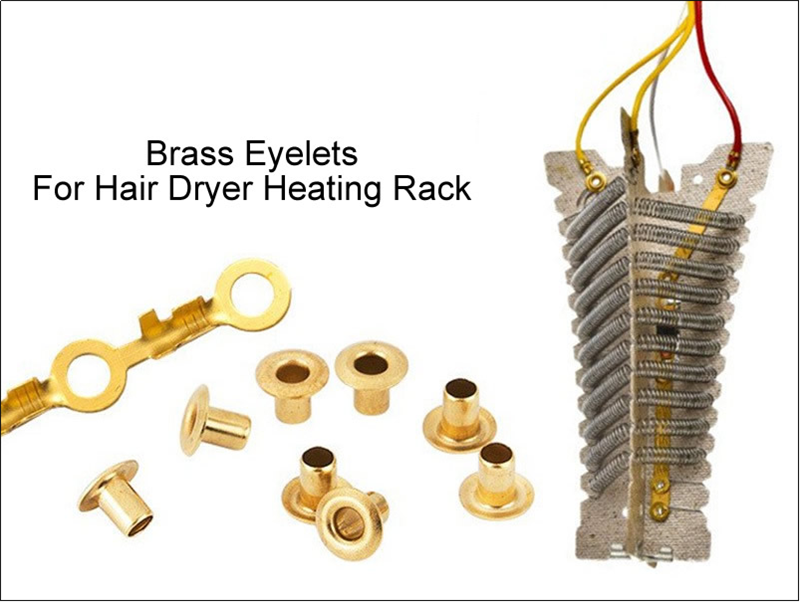
Comparison between hollow rivets and other rivets
(1) Compared with solid rivets: full tubular rivets are lighter and breathable, but have lower strength.
(2) Compared with semi-tubular rivets: the tail of semi-tubular rivets is partially hollow, with slightly higher strength, but the ventilation is not as good as full hollow rivets.
(3) Compared with blind rivets: the mandrel of blind rivets remains after installation, while the mandrel of full hollow rivets is completely detached, making the connection neater.
Suggestions for purchasing full tubular rivets
(1) Select rivets of appropriate length according to the thickness of the material to ensure that they can fully expand after installation.
(2) Consider the use environment. For example, corrosion-resistant or high-temperature resistant materials should be selected for humid or high-temperature conditions.
(3) Before purchasing in bulk, you can try it out first to confirm the riveting effect and tool compatibility.
Maintenance and precautions for full tubular rivets
(1) Avoid excessive force during installation to prevent rivet deformation or material damage.
(2) Regularly check the connection parts and replace them in time if they are loose or rusted.
(3) Keep them away from moisture during storage to prevent oxidation of the rivet surface that affects their use.
As a practical connector, full tubular rivets have irreplaceable advantages in specific scenarios. Understanding their characteristics and application methods will help you choose and use them reasonably in actual work, improving work efficiency and connection quality.
- View as
Rebites tubulares
Os rebites tubulares normalmente consistem em uma haste e uma tampa, com um centro oco. Esse design permite que a extremidade da haste se enrole para fora quando submetida à pressão axial, formando outra estrutura semelhante a uma tampa, apertando assim dois ou mais materiais juntos. Ao contrário dos rebites sólidos familiares, os rebites ocos não exigem martelamento do lado oposto, tornando -os mais adequados para aplicações de montagem que só podem ser operadas de um lado.
consulte Mais informaçãoEnviar consultaRebites do tubo de aço
Os rebites dos tubos de aço oferecem vantagens, como leveza, alta resistência, resistência à corrosão, excelente estampa e alta confiabilidade. Eles são adequados para unir uma variedade de materiais, como ligas de alumínio, aço e plásticos. Além disso, o corpo oco dos rebites do tubo de aço reduz significativamente seu peso, contribuindo para a leveza geral da estrutura.
consulte Mais informaçãoEnviar consultaRebites do tubo de aço inoxidável
Os rebites do tubo de aço inoxidável consistem em um corpo e uma tampa, com um canal oco no meio. Esse design permite que o rebite proteja materiais espremendo ou expandindo durante o processo de união. O aço inoxidável foi escolhido principalmente por sua resistência à corrosão. O cromo em aço inoxidável forma um filme de óxido na superfície, impedindo a ferrugem e prolongando a vida útil do rebite. O aço inoxidável também oferece excelente resistência e resistência, tornando -o adequado para uma ampla gama de condições ambientais. Os metais de nuote é um fabricante de rebites de tubos de aço inoxidável na China por mais de 10 anos.
consulte Mais informaçãoEnviar consultaRebites do tubo
Os rebites do tubo são normalmente usados em aplicações em que a fixação é necessária, mas a força extrema não é. Por exemplo, em dispositivos eletrônicos, eles podem ser usados para conectar placas de circuito ou componentes da habitação. Na fabricação de móveis, eles podem ser usados para prender estruturas de metal ou madeira. Alguns itens decorativos ou pequenos dispositivos mecânicos também usam esses rebites.
consulte Mais informaçãoEnviar consultaRebites dos ilhós
Os rebites dos ilhós são um rebite versátil comumente usado para conectar placas finas de alumínio e aço. Eles são caracterizados por belos pontos de rebitagem, estrutura forte e altura ajustável. Eles são adequados para conectar várias placas de metal e materiais diferentes. Os rebites dos ilhós podem ser polidos a quente para formar uma camada protetora na superfície, que possui propriedades anti-estática, resistente à corrosão e anti-alérgicas.
consulte Mais informaçãoEnviar consultaRebites de tubo de latão
Os rebites dos tubos de latão são um fixador mecânico comum usado em uma ampla gama de indústrias. Eles são cilíndricos ocos e geralmente apresentam abas em cada extremidade. Os rebites do tubo de latão atingem uma conexão através da deformação e oferecem excelente condutividade elétrica, resistência à corrosão e facilidade de instalação.
consulte Mais informaçãoEnviar consulta
